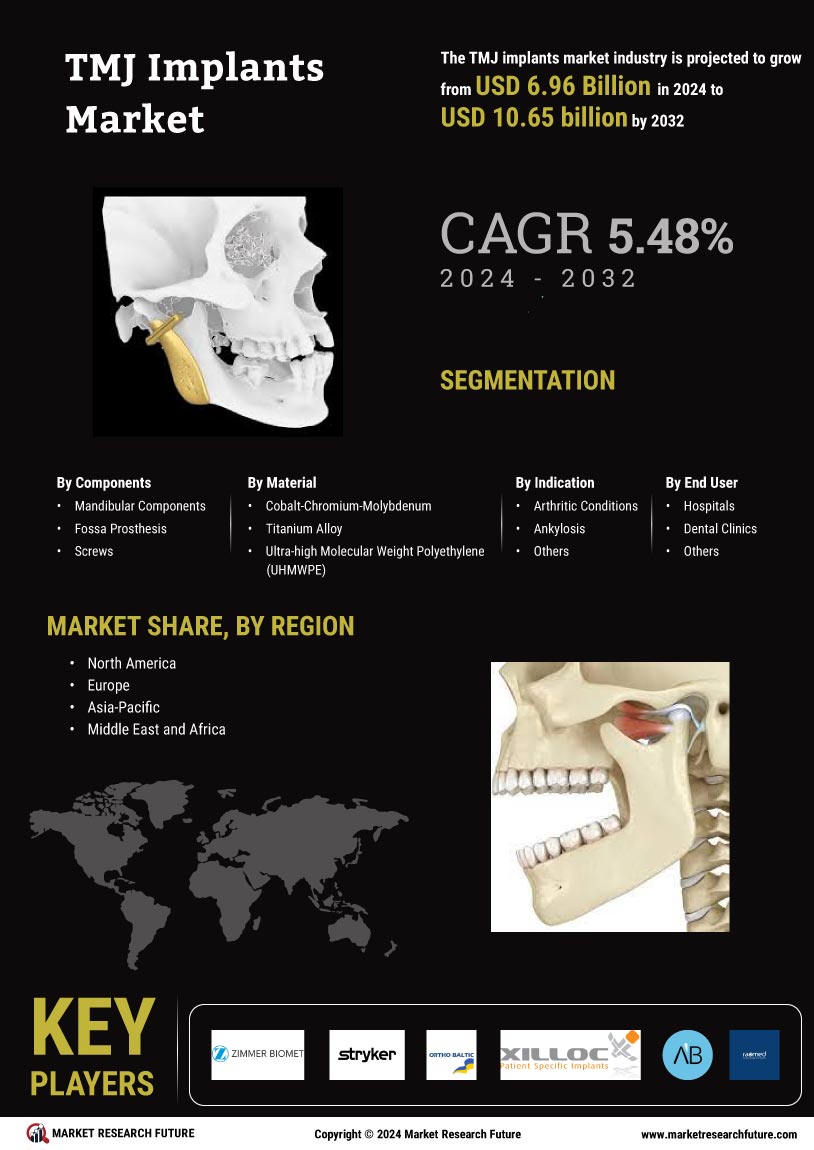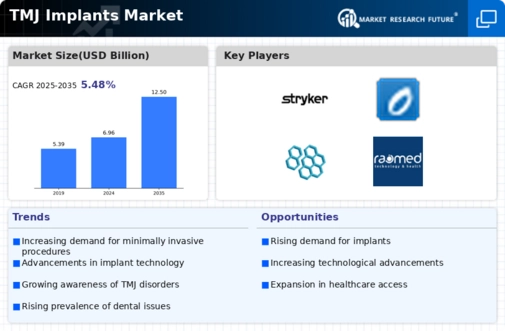By Region, the study segments the market into North America, Europe, Asia-Pacific, and Rest of the World.
The North America TMJ implants market is expected to account for USD 3.40 billion in 2022 and is expected to exhibit a 4.23% CAGR during the study period. This is attributed to the advanced healthcare infrastructure, high healthcare expenditure, sports-related mouth injuries, and the presence of prominent industry players. According to Food and Drug Administration (FDA), the U.S. recorded 5500 TMJ total joint replacement during the tenure of 2005-2014, while during 2014-2018, the region recorded 680 MDRs related to TMJ implants.
Moreover, according to the Journal of the American Dental Association (JADA), 13-39% of dental injuries are associated with sports, among which 2-18% of the damages are related to the maxillofacial region. In addition, the National Federation of State High School Associations (NFHS) has listed a few sports such as ice hockey, football, lacrosse, wrestling, and field hockey for proper mouth guards. in the region drive the regional market growth during the forecast period.
Further, the major countries studied are the U.S., Canada, Germany, France, the UK, Italy, Spain, China, Japan, India, Australia, South Korea, and Brazil.
Figure 3: Global TMJ Implants Share By Region 2022

Source: Secondary Research, Primary Research, Market Research Future Database, and Analyst Review
Europe TMJ implants market is expected to account for the second-largest market share due to the government authorities are investing in healthcare infrastructure to support the administration of 3D printing medical devices. The rising demand for customized TMJ implants across the region is imposing industry players to manufacture the implants using 3D printing. This will aid healthcare professionals in performing treatments in emergency cases. Moreover, increasing temporomandibular disorder (TMD) cases owing to wear and tear of joint surrounding cartilage tissue drives the demand for TMJ implants.
Furthermore, increasing stress and poor posture among the young working population is driving the Europe TMJ implant market. Likewise, the healthcare professionals are using CT scans, CAD, and CAM, to design the implant geometrically, making it feasible for the doctors to administer the implant accurately. The adoption of such technologies for increasing feasibility, accuracy, and productivity is propelling the TMJ implants market across Europe.
The Asia-Pacific TMJ implants market is expected to grow at a CAGR of 3.69% from 2024 to 2032. This is due to transformation in healthcare infrastructure, rising investment to upgrade medical device manufacturing facilities, economical device costs and treatment facilities. Owing to the rising number of cases across different countries in Asia, the government authorities have planned to invest in healthcare facilities. These public authorities are also investing in R&D activities to develop advanced medical devices. The government authorities are partnering with private players to accelerate the innovation process and commercialize healthcare-related products.
In addition, the treatment for TMJ disorder is economical in this region.
The Rest of the World includes the Middle East, Africa, and Latin America. Middle East hold the major market share in middle east and Africa region due to the corona outbreak, the region experienced a crisis in the development and manufacturing of healthcare products. However, the government authorities are recruiting highly qualified surgeons and medical staff for surgical assistance. These surgeons are well versed in cosmetics, implants, dentures, temporomandibular disorders, and maxillofacial prostheses. In addition, the public authorities are investing in the advancement of hospital infrastructure and promote medical tourism to uplift their healthcare industry revenue.
Moreover, limited medical facilities in Africa have held back the market growth of TMJ implants in the region.
















Leave a Comment